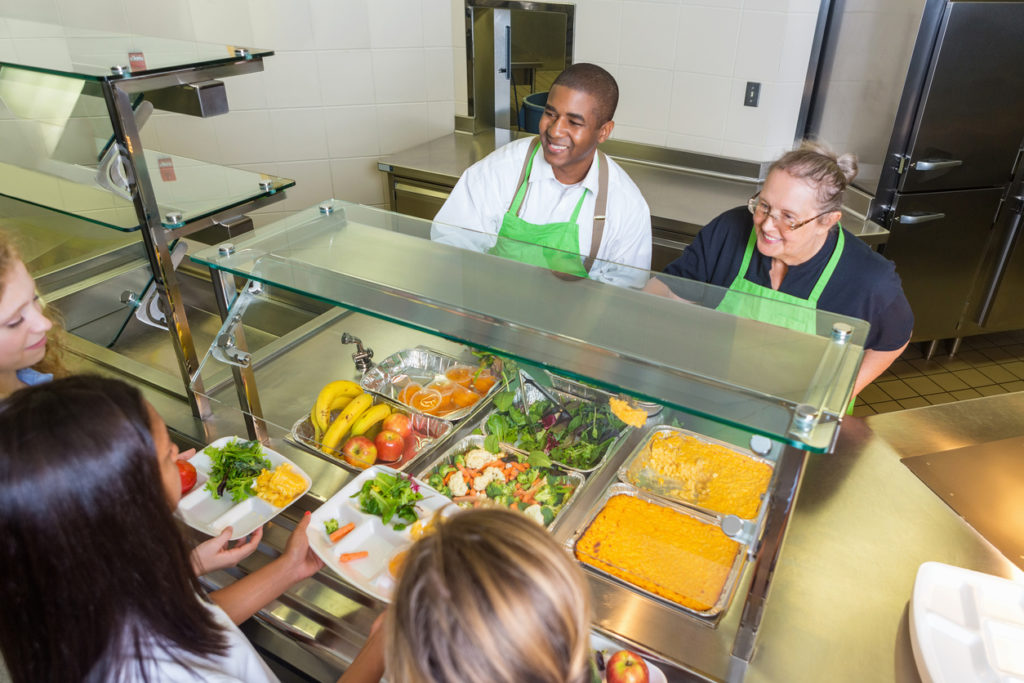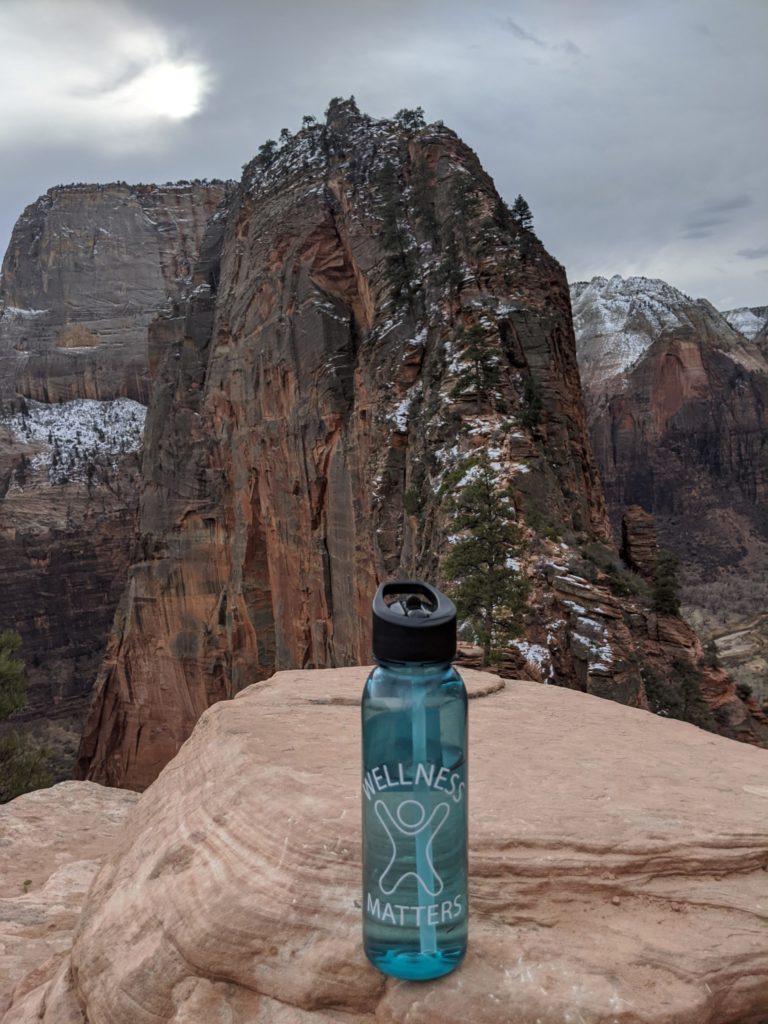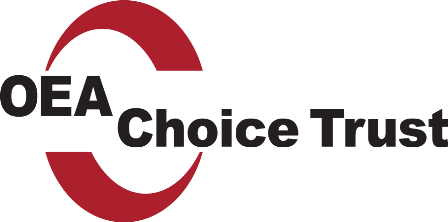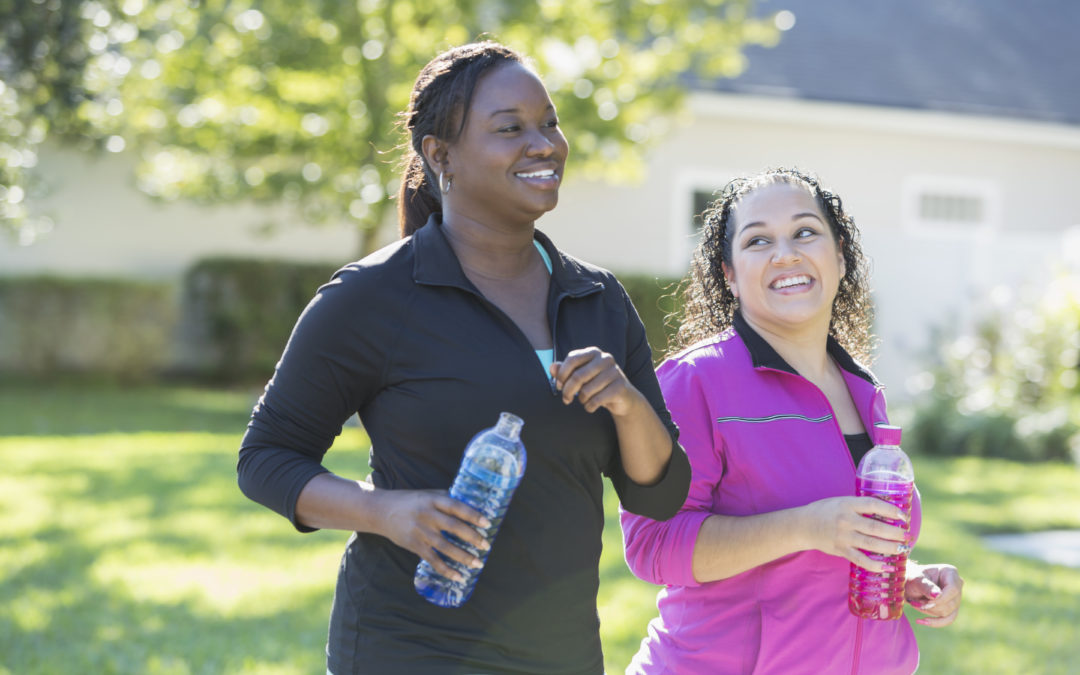*Quotes are all captured from an interview with Whitney Ellersick, Nutrition Services Director of Portland Public Schools.
The Portland Public Schools Nutrition Services (PPS NS) Department is in its third year of a pilot project with OEA Choice Trust. The project is focused on bringing employee wellness into sectors of the workforce that can be hard to reach.
Ninety Sites, Over 200 Employees
PPS NS serves 90 different school sites in the Portland area with about 240 employees. Department leaders realized that to help recruit, retain and support a healthy workforce, they needed to hear and address staff needs. Meeting employee needs, such as the need to practice healthy behaviors during the workday or be more socially connected to colleagues, can help employees be more healthy, present and safe on the job.
“We were constantly seeing the need for something for our team, something that was supportive beyond what we typically do within our operations. We were continually struggling to recruit and retain people. In addition to that, we had some people who were thinking about retirement, we had people who, within the kitchen – a physically demanding job, were getting injured. All the while, we kept hearing from our staff that they’re working two or three jobs or they’re caring for other family members. There were so many other demands on top of what we were asking them to do within the scope of the work. We realized that we needed to be able to hear and address those other needs if we (PPS NS) were to ever have them think about what we were asking of them.”
When an employee routinely deals with chronic stressors in their personal life or in the workplace, it can negatively impact their ability to care for themselves, be present on the job or stay safe and healthy.
By developing and maintaining an employee driven school employee wellness (SEW) program, PPS NS management is supporting employees’ health, well-being and resilience. This can help their workforce to be safer, healthier and more efficient.

Photo of nutrition services staff serving students lunch
Hard to Reach Employees
Staff members working in facilities, custodial, transportation and nutrition services departments often have different schedules and workdays than administrative, licensed and educational support staff. The nature of their work environments require different safety measures.
The health, well-being and resilience of operational staff within schools, ESDs and community colleges is as important as any other staff member in the organization.
Before the pilot project, managers at PPS NS focused on manager-led employee wellness activities. A wellness fair with tabling and Jazzercise was hosted with support from an intern. Walks were built into employee training days.
“We had tried encouraging wellness behaviors within our team, but it was more of a top-down approach. It was me saying ‘Let’s get together and walk around the track!’ or another manager working with an intern and they would create a walking challenge. It was more like management is telling me this is something I need or have to do. There was some interest there, but it wasn’t embraced, and it wasn’t sustainable because as a manager or central office team member, we also didn’t feel like we had the capacity to sustain it or felt like it was necessarily for everybody.”
Ready to learn from these experiences, PPS NS agreed to be part of the pilot project led by OEA Choice Trust. As part of the pilot project, PPS NS and the Trust slowly crafted a sustainable, employee-driven program.
Creating an Employee-Driven Program
To start, PPS NS employees created a wellness committee. The wellness team is employee led and managers may sit in on the meetings. The goal is for employees to lead the conversation and feel ownership over the wellness program. Whitney sees management’s role as support.
With support and guidance from OEA Choice Trust, staff needs and interest surveys and focus groups were conducted to gather employee feedback. This information helped the wellness committee and managers better understand what employee wellness meant to Nutrition Services staff.
Leadership and the wellness committee worked together during multiple meetings to analyze employee feedback and plan the wellness program. These meetings, which have continued throughout program implementation, have been a way for wellness committee members and leadership to build trust, understanding and positive relationships.
Next, managers worked on gathering employee support for developing an employee wellness program. Direct, face-to-face communication was employees’ preferred method for discussing wellness, which took time.
The wellness committee’s efforts have grown with time and practice. The committee has also had an impact on other aspects of employee wellness and the workplace.
“What was born out of this committee was another little branch called the Recognition Committee. They wanted to explore other ways to recognize staff, outside of what we’re already doing, to feel more connected and hear what others are doing; it built off that need for communication and feeling like one community.”
Whitney explained that the Safety Committee, which is focused on processes and safety for employees, has also been positively influenced by the wellness committee. One example was that the drivers and warehouse have requested to stretch before their shifts due to colder days and the physically demanding work. The safety committee is supporting this request from a procedural standpoint.

PPS NS “Wellness Matters” water bottle
Active Leadership Support
Whitney works to find a balance between visibly supporting the team – attending meetings, participating in events – and taking a backseat so the wellness team can be empowered.
“While I would love to be involved in everything, because I love this idea and this concept [school employee wellness] is something I care very much about and I care about my team, it’s important for me to realize how my role can influence the conversations, how my role might come with intimidation that might stifle creativity. I don’t want my presence or the idea of who I might be to influence the outcome. I want to encourage and allow the committee to do what they want to do without having a fear that Whitney is going to say no.”
Whitney does not attend the wellness committee meetings. She learns about wellness committee events and offerings just like other employees, through email and other communications.
“My role is to be supportive and to be a good listener – an engaged and active listener, to hear and vet what they’re trying to say and do. If anything, it might be [my role] to seek clarification about what an idea or concept means to them, especially if it transcends into other committees or operational work.”
Whitney is also mindful of what she learns from focus groups results, staff wellness survey results and the wellness committee. The information about staff concerns, such as feelings of isolation, can help management consider how they can support staff, outside of wellness efforts, in feeling more connected and part of a community.
Grace Clark, a PPS NS Program Manager, attends wellness committee meetings. Whitney is working with Grace and other leaders that attend to consider additional ways to encourage and empower staff on the wellness committee.
The committee is also creating a decision-making tree with questions to help empower them to make decisions and understand when to have leadership weigh in. For example, financial matters and building wellness into training time requires Whitney’s approval.
Building Trust
When asked how to build trust and collaboration between leaders and staff on the wellness program, Whitney said, “They can see themselves in the work, their ideas in the work, that helps to build trust.”
Whitney also noted that her involvement, or a lack of it, can help build trust. “When I want to be a part of everything [related to the wellness program], it’s because I have a passion and I want to see what everyone’s doing. However, that could also be translated as ‘You don’t trust us’ or ‘You’re micromanaging us’. If I show up too much, or if I’m too vocal at a meeting, then that’s not effective; it’s only stifling others. I have to find that balance.”
Whitney communicates with the wellness team, asking them what they need from her before meetings and routinely lets them know she’s available if they need support.
Sustaining
By focusing on an employee-led, employee-driven program, PPS NS has developed something more than “just another initiative.” Whitney is working with others to embed the program into the workplace, making it something employees can count on.
“We’re still learning as we go. Year 3 sounds like ‘oh it’s been a long time’, but I feel like it’s just starting to take off. We need to make sure, as we take off, that we’re still making people feel like they’re included in that work.”

